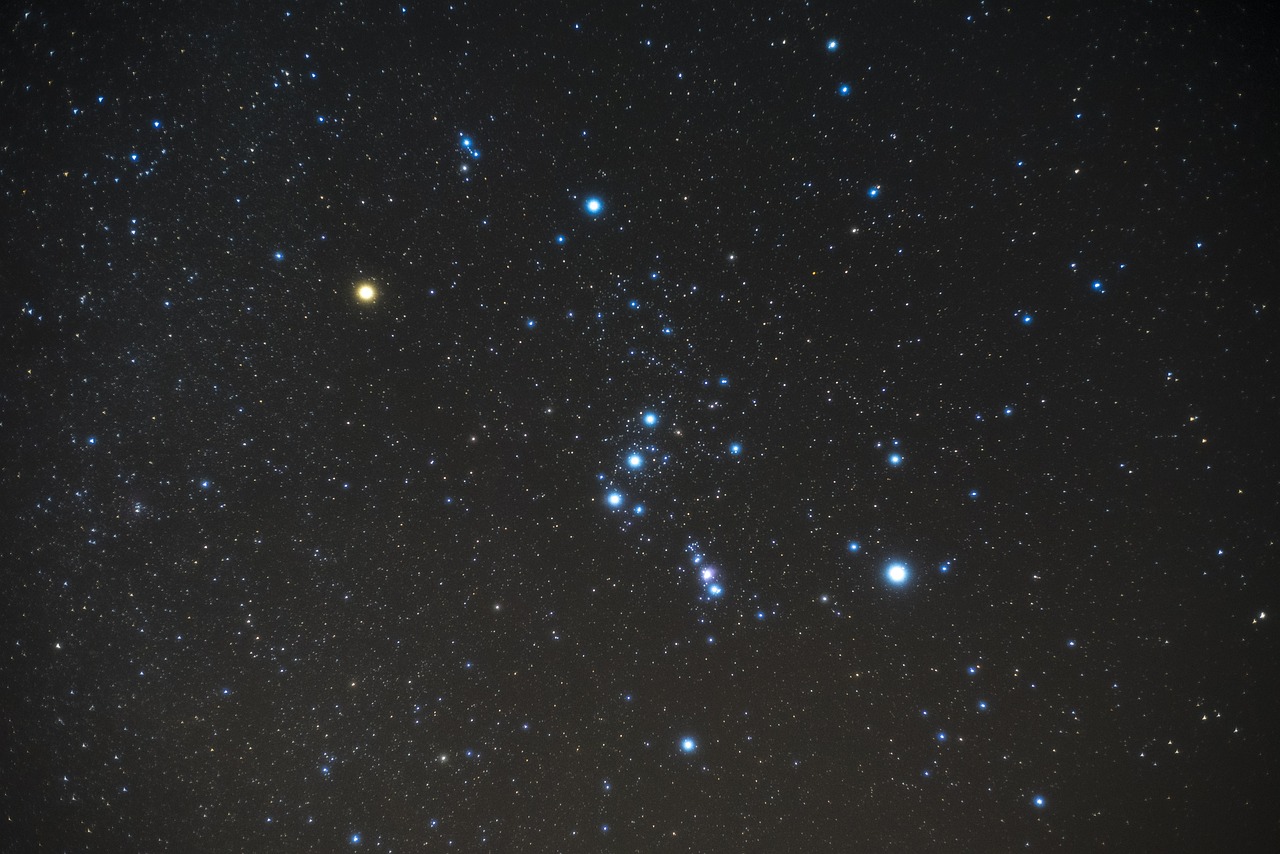National Measuring Campaign | Counting Stars
Having dark skies at night is a ‘primordial’ quality of life that is vital to humans and nature and must therefore be taken good care of. Research by the University of Groningen and others indicates that the disappearance of darkness has adverse consequences. But exactly how dark is it nowadays? The UG has a darkness measuring network in place as part of the ‘Donkerte van de Wadden’ [Darkness of the Wadden region] programme ‘but we cannot measure everywhere,’ says ‘darkness watcher’ Theo Jurriens. That is why we are seeking help from the public during the National Star Count.
When?
Measurements must take place in the period from 1 February to 14 February and from 1 March to 14 March starting at 8 p.m. This is due to the position of the moon: measurements have to be done when the moon is below the horizon. During bad weather conditions, cloudy skies, or when the moon is above the horizon it is pointless to take measurements.
Orion
The Orion constellation is the focus of the measuring campaign in which everyone can participate by counting the stars in this easily recognizable constellation. The step-by-step plan is as follows: after 8 p.m. go outside and look for the Orion constellation. Wait 15 minutes as your eyes have to get used to the darkness. The four corner stars of Orion form a rectangle: count the number of stars within this rectangle. Repeat the measurement several times in a row and then report the average value. Measurements may be submitted through the visitwadden.nl/sterrentellen website (Dutch only) where you will also find a map visualizing the measurement data. On this website, you will also find a manual comprising more details.

Previous measurement campaigns
In 2021, the measuring campaign fell through: there were too many clouds making it almost impossible to carry out measurements. In 2022, people from all over the Netherlands participated with over 600 counters joining. 2023 was also not a good ‘counting year’ due to the weather conditions. We hope for clear skies this year!
Conference
The University of Groningen is hosting ‘EURODARK’, an international conference on light pollution that takes place from 14 to 16 March in Paterswolde, Drenthe. The results of the measuring campaign will also be presented there.
Stargazing days
This year’s star count will also make for a nice ‘appetizer’ for the national Stargazing Days that will take place from 15 to 17 March. Telescopes will be set up in many places in the Netherlands–a wonderful opportunity to enjoy the starry skies.
Donkerte van de Wadden
Donkerte van de Wadden, an initiative of the nature and environment federations of the provinces of Noord-Holland, Friesland, and Groningen, the University of Groningen, the Dutch nature conservation organization Natuurmonumenten, and the Dutch government organization for forestry and the management of nature reserves Staatsbosbeheer. The event aims to let residents and visitors experience the darkness of the Wadden region and learn about the importance of darkness, for example by organizing the Nacht van het Wad (Night of the Wadden Region).
More information
More news
-
19 December 2025
Mariano Méndez receives Argentine RAÍCES award
-
18 December 2025
Why innovate, and for whom?
-
17 December 2025
Ben Feringa wins Feynman Prize
